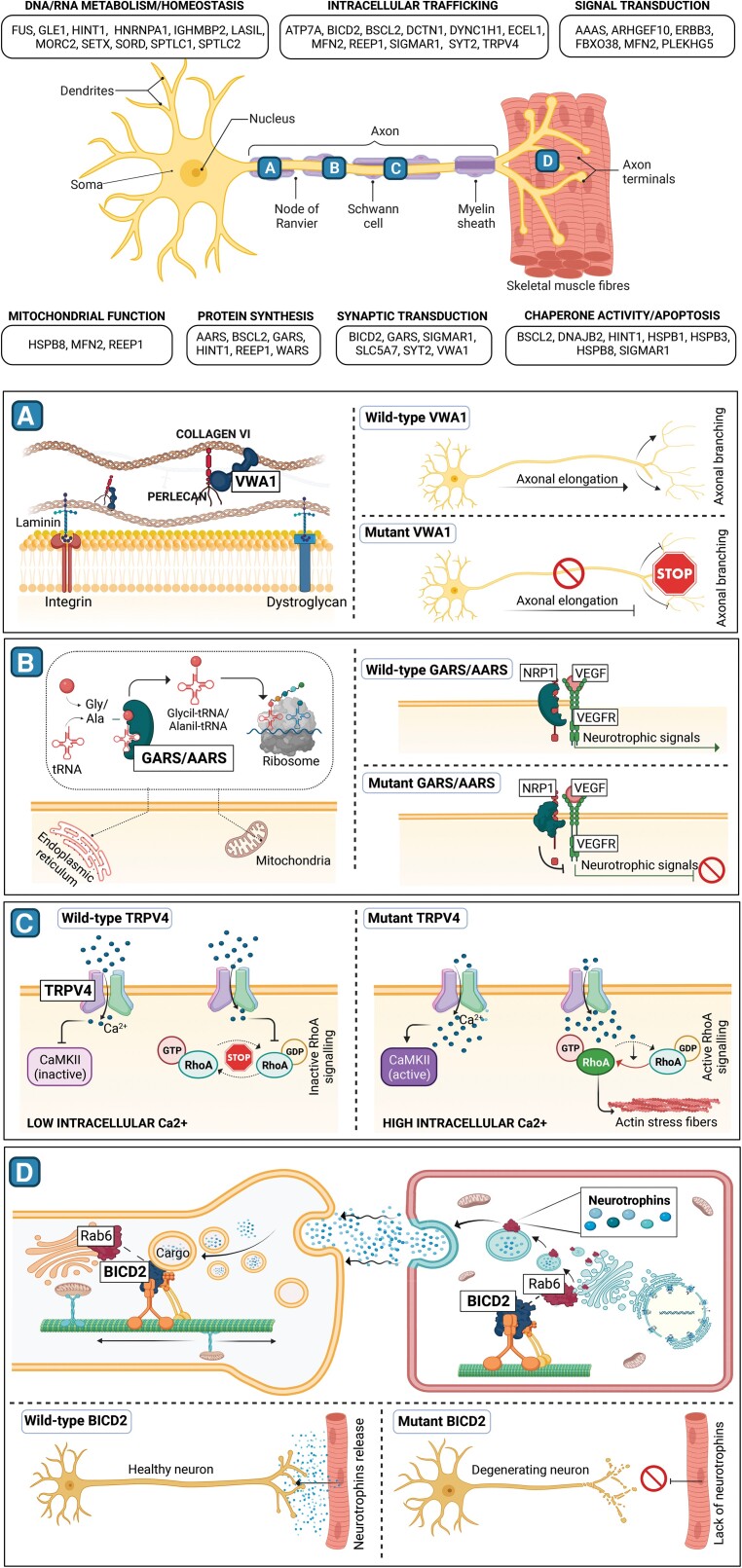Figure 2.
Schematic representation of molecular mechanism involved in neuronopathies. The top section includes a central schematic of motor nerve structure and its interaction with skeletal muscle fibres. Genes associated with neuronopathies, grouped according to their main function, are mentioned in panels surrounding the schematic. (A–D) Aim to show the physiological role of genes recently implicated in these disorders and their presumed pathological mechanism. (A) Mutations in the extracellular protein VWA, that in its wild-type state connects collagen VI and perlecan, affect both axonal elongation and branching. (B) Mutant GARS and AARS tRNA synthetases are thought to impede the release of neurotrophic signals by binding NRP1 protein and thus altering Nrp1/VEGF signalling. (C) The increase of intracellular calcium resulting from the mutant TRPV4 channel activates CAMKII ad RhoA signalling, leading to the formation of cytoplasmic actin stress fibers. (D) A defective BICD2 protein impairs both the release of muscle neurotrophins and the neuronal vesicles retrograde transport, resulting in abnormal development of the motor unit and neuronal degeneration.

